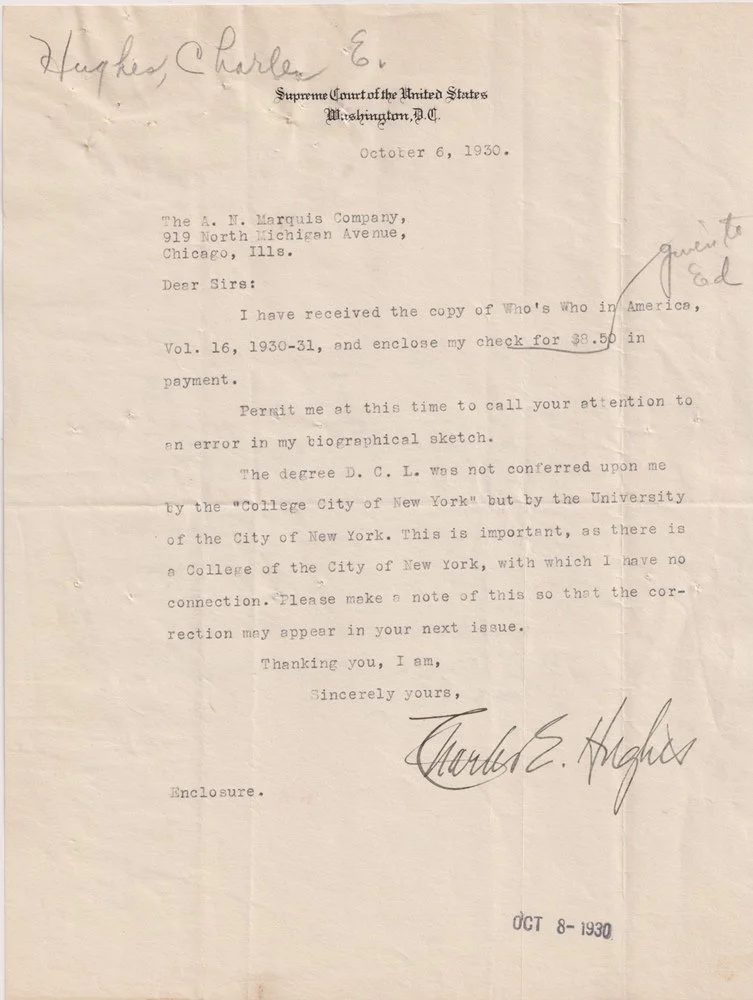
Hughes, Charles Evans
Hughes corrects his entry in Who’s Who
Charles E. Hughes – Signed letter as Chief Justice to the A.N. Marquis Company, publishers of Who’s Who in America. He pays for his copy of the volume and then clarifies a minor point in his own profile. The October 6, 1930 letter is accompanied by a copy of the 1930-31 edition carrying the error.
Condition. One page on Court letterhead. There are two pencil notations in another hand and a rubber date stamp in the lower margin.
Hughes autographs are plentiful, offering collectors a range of formats including letters, album pages, photos and documents. His material fits into a with a wide cross-section of collecting fields: Chief Justices, presidential nominees, Cabinet members or Governors and. Pick your choice, any make a nice addition to your collection.
Hughes’s career is one of the most distinguished careers in American public life. Hughes was elected Governor of New York, challenging corruption and corporate excesses. President Taft appointed him to the Supreme Court in 1910. He served six years when he resigned to run for president against Woodrow Wilson in 1916. When Warren Harding became President, Hughes was pulled back from private law practice to become Secretary of State under both Harding and Coolidge. Herbert Hoover later appointed him Chief Justice, to replace William Howard Taft, the man who first appointed Hughes to the Court. He served as Chief Justice from 1930-1941.
Hughes corrects his entry in Who’s Who
Charles E. Hughes – Signed letter as Chief Justice to the A.N. Marquis Company, publishers of Who’s Who in America. He pays for his copy of the volume and then clarifies a minor point in his own profile. The October 6, 1930 letter is accompanied by a copy of the 1930-31 edition carrying the error.
Condition. One page on Court letterhead. There are two pencil notations in another hand and a rubber date stamp in the lower margin.
Hughes autographs are plentiful, offering collectors a range of formats including letters, album pages, photos and documents. His material fits into a with a wide cross-section of collecting fields: Chief Justices, presidential nominees, Cabinet members or Governors and. Pick your choice, any make a nice addition to your collection.
Hughes’s career is one of the most distinguished careers in American public life. Hughes was elected Governor of New York, challenging corruption and corporate excesses. President Taft appointed him to the Supreme Court in 1910. He served six years when he resigned to run for president against Woodrow Wilson in 1916. When Warren Harding became President, Hughes was pulled back from private law practice to become Secretary of State under both Harding and Coolidge. Herbert Hoover later appointed him Chief Justice, to replace William Howard Taft, the man who first appointed Hughes to the Court. He served as Chief Justice from 1930-1941.
